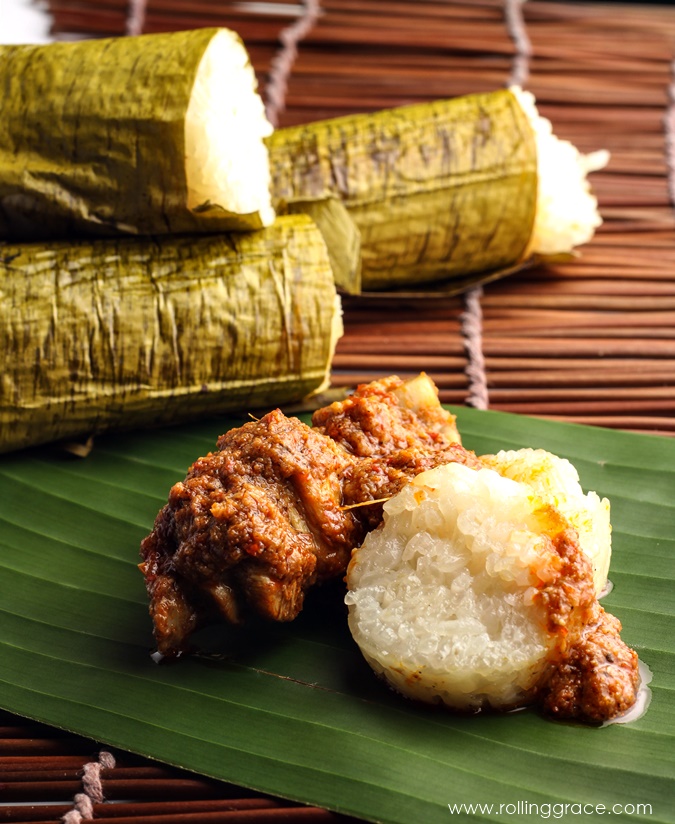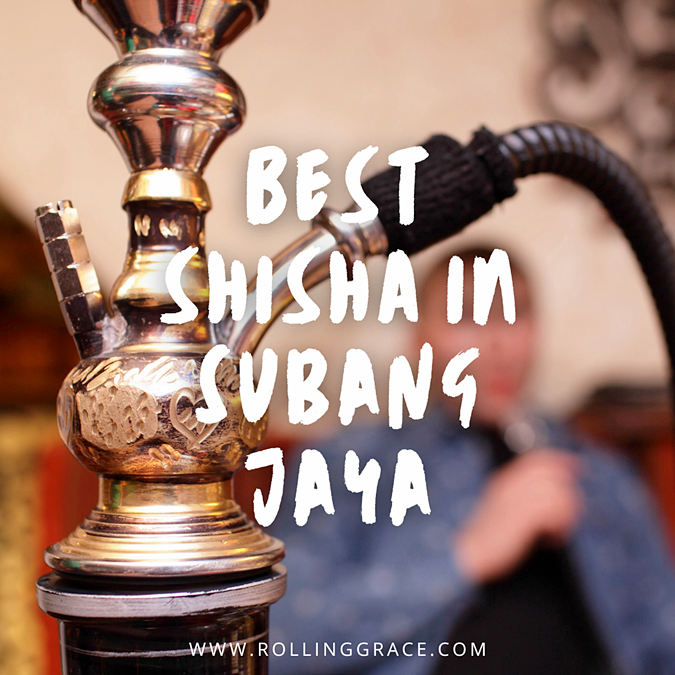20 Rice Dishes You Must Try in Malaysia
Malaysia is a multiracial country. According to population projections in 2017, the country is made up of approximately 69% Malays and indigenous people, 23% Chinese and 7% Indians. Thanks to this unusual yet unique composition, the country has become what it is today: a melting pot of cultures, religions, as well as traditional and fusion delicacies.
In spite of all the differences, all these cohabiting races share a common soft spot - their eternal love for rice. Heading to Malaysia soon? You're going to want to try the following lip-smacking and unforgettable rice dishes till the very last grain!
20 Rice Dishes You Must Try in Malaysia
Nasi Dagang (Malay)
Nasi Dagang is made by steaming rice in aromatic coconut milk and fenugreek seeds, which give it its signature flavor. Nasi Dagang found in Kelantan consists of purple wild rice which is slightly glutinous and chewy, whereas the Terengganu version uses white rice. A common breakfast item in the eastern coast of Peninsular Malaysia and southern Thailand, the rice is served alongside fish curry, roasted shaved coconut, solok lada (stuffed chilli), hard-boiled eggs and a variety of pickles.
Nasi Lemak (Malay)
The national dish of Malaysia needs no introduction. A meal best enjoyed at any time of the day, the name literally translates to “fatty rice”, as the rice preparation calls for generous dousing of coconut cream. Steamed on pandan leaves for roselike fragrance, the dish is served with sweet and spicy sambal (chili paste), roasted groundnuts, egg, fresh cucumber slices and fried anchovies - typically and traditionally wrapped securely in banana leaves.
 |
| Malaysia's National Dish: Nasi Lemak |
Bak Kut Teh (Chinese)
Fatty and aromatic, Bak Kut Teh literally means “meat bone tea”. The rich and flavorful broth is a result of hours of cooking the ribs, spices, herbs and garlic together. It is served with either white jasmine rice or yam rice, and youtiao or Chinese crullers.
 |
| Bak Kut Teh or BKT in Malaysia |
Nasi Kandar (Indian Muslim)
Claimed to have originated from Penang, Nasi Kandar is essentially white rice served with a variety of side dishes that ranges from savory curries to assorted vegetables. Displayed in a buffet-style manner, customers are required to scoop whatever they want onto their plates before a waiter drops by to calculate the price of your meal. Top Nasi Kandar picks: Squid curry, ayam goreng berempah cabbage with mustard seeds, and stir-fried okra.
Nasi Kerabu (Malay)
Both mesmerizing to look at and delicious to devour, Nasi Kerabu is a beautifully assembled dish created in Kelantan. The blue rice is naturally dyed using telang flowers or the petals of butterfly pea flowers, and is topped with a complete set of exotic and defining side dishes such as ulam (traditional salad), prawn crackers, toasted grated coconut, aromatic herbs, fish relish, hard-boiled salted egg, and a few different types of sambal belacan.
 |
| Nasi Kerabu is a popular and colorful rich dish in Malaysia |
Lemang (Malay)
Lemang is prepared using local white glutinous rice and coconut milk, roasted slowly over open fire in hollow bamboo poles that are lined with banana leaves. The result? Wet, sticky and irresistible rice that goes incredibly well with serunding (meat floss), rendang and meat curry.
 |
| Lemang and Rendang |
Chicken Rice (Chinese)
Originally from China’s Hainan province, this internationally renowned dish has long been assimilated into the Malaysia culinary scene and its recipe has also been dutifully modified to cater to the local’s preference. With chicken broth being the secret formula, this simple 2-part dish (chicken and rice, duh) is best eaten with a special chili dip and a bold ginger-garlic sauce combo.
 |
| Chinese Chicken Rice in Malaysia |
Chao Fan (Chinese)
Chao Fan is prepared using leftover cooked rice, a variety of vegetables and meat, and is seasoned primarily with soy sauce. In the past, cooking fried rice was a way to salvage leftovers and hence preventing wastage. As there isn’t a fixed recipe to prepare this blissfully simple dish, the exceedingly versatile Chao Fan is different in every shop, each of them adding their own unique touch to the ingredients, seasonings, vegetables and protein.
 |
| Chinese Fried Rice in Malaysia |
Nasi Goreng (Malay)
The Malay version of Chao Fan, Nasi Goreng is the Malay way of preparing fried rice. Similarly, it makes use of leftover rice which is then stir fried with garlic, bird-eye chili, meat, sweet soy sauce and is most often topped with a fried egg. Best eaten anytime of the day!
 |
| Nasi Goreng can be eaten at any time of the day! |
Nasi Biryani (Indian)
Biryani is a mixed rice dish with Muslim and Indian origins, prepared using Indian spices such as nutmeg, mace, cloves, cardamon, bay leaves, cinnamon, while premium varieties use saffron, which gives the rice its bright orange colour. Its unique taste is derived from aromatic herbs, chili, garlic, ginger and onion, and can be cooked with any type of meat such as chicken, beef and fish. A vegetarian Biryani is known as pulao.
 |
| Nasi Biryani in Malaysia |
Claypot Chicken Rice (Chinese)
Commonly eaten at dinner, this dish is a hit in Malaysia, Singapore as well as Southern China. Its star ingredient is a type of sweet preserved Chinese sausage known as lap cheong, alongside chicken pieces, dark soy sauce, dried salted fish, rice and vegetables in a sturdy clay pot. Traditionally cooked over a charcoal stove and hence enhancing its flavors by giving it a distinct, smoky taste. As the dish is made to order, expect to wait at least 20 minutes before it is served!
 |
| Chinese Claypot Chicken Rice in Malaysia |
Zong Zi (Chinese)
This traditional rice dish is prepared using glutinous rice with fillings such as meat, salted egg yolk, shiitake mushroom, and water chestnut, wrapped tightly in bamboo leaves. It is seasoned using white pepper, five-spice powder, Shaoxing rice wine and dark soy sauce for a juicy, addictive finish.
 |
| Chinese Rice Dumplings in Malaysia |
Lo Mai Gai (Chinese)
Similar to Zong Zi in terms of preparation, Lo Mai Gai is a dim sum dish which consists of glutinous rice, chicken, shiitake mushrooms, Chinese sausage slices with pleasurable aroma reeking of scallion and dried shrimp. It is traditionally wrapped in dried lotus leaves but in Malaysia, it is commonly found steamed in bowls made from heat-resistant aluminum foil.
 |
| Popular Chinese Dim Sum: Lo Mai Gai |
Banana Leaf Rice (Indian)
Eating with the hand on banana leaves is a traditional custom among the South Indians. This dish in particular, requires white rice to be served alongside a variety of curries and vegetables cooked in different manner and to different consistencies, tangy pickles, papadum (crispy crackers) and occasionally accompanied by meat, although this banana leaf meal is traditionally a vegetarian dish. To complete the meal, sip on rasam - a sourish soup which aids digestion!
Idli (Indian)
Originated from the Indian subcontinent, Idli is a type of rice cake eaten with flavorsome gravies and chutneys. This delicious breakfast food is made by steaming a batter prepared using fermented rice and urad dal (black gram) until it achieves a soft, squishy and fluffy texture.
Nasi Goreng Ladna (Malay)
Fried rice and hot gravy served on the same plate, this luscious dish comprises of chicken or seafood and an assortment of vegetables, notably carrot, baby corn, Chinese broccoli, and cauliflower. Best eaten warm!
Kuih Seri Muka (Malay)
One of the most common and popular kuih (dessert) in Malaysia, Seri Muka consists of two layers - custard with a distinct green colour on top and chewy glutinous rice that makes up the bottom half. Infused with coconut cream and pandan extract, this creamy dessert makes a great treat between meals.
 |
| Kuih Seri Muka - a popular street food in Malaysia |
Bubur Pulut Hitam (Chinese)
Did you know? Black glutinous rice is the unpolished whole grain of its white counterpart. This variety has a slightly stickier texture compared to normal rice as it is made up of a type of starch known as amylopectin. This gooey rice porridge is both sweet and nutritional, and its taste is further enhanced with coconut milk for a divine, velvety finish.
 |
| Bubur Pulut Hitam in Malaysia |
Pulut Inti (Peranakan)
This famous Nyonya dessert is especially popular in Melaka and Penang, and is available throughout the country. The glutinous rice is dyed using bunga telang or butterfly pea flower, giving it a natural and appealing blue tint. It is topped with sweet grated coconut, and is served wrapped in banana leaves in a distinguishable triangular pyramid shape.
 |
| Kuih Pulut Inti in Malaysia |
Payasam (Indian)
Also known as Kheer, Payasam is a type of Indian rice pudding prepared by boiling rice, milk and sugar together. Other delightful additions include raisins, saffron, pistachios, cardamon and/or cashews. Slow-cooked to creamy perfection, this dish is typically served as a hearty dessert after meals.
 |
| Indian Payasam or Kheer in Malaysia |
Don't forget to share your travel & dining moments with us on Instagram by tagging @rollinggrace or #RollingGrace. Happy travelling!










I have yet to try the last one payasam. I would love to try that one out, and soon I hope.
ReplyDeleteMostly dah banyak menu dalam senarai bella dah rasa. Chao Fan tu macam nasi goreng Cina yang biasa melayu buat gak. Lo Mai Gai pun penah makan kat mana ntah lupa. Hotel rasanya.
ReplyDeleteActually lebih dari 20 nasi ada.. Hehehe.. Yang malay mostly semua pernh rasa. Macam2 nasi kita dnegna pelbagai masyarakat
ReplyDelete